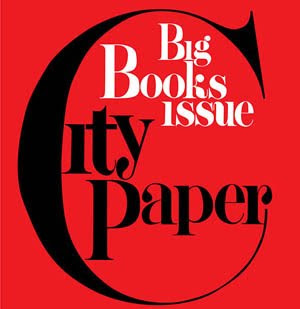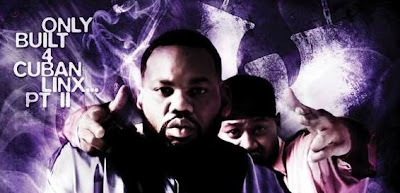 “Bow down in awe all would-be songwriters”-John Darnielle on “Shakey Dog Pt. 1″
“Bow down in awe all would-be songwriters”-John Darnielle on “Shakey Dog Pt. 1″
Though the obvious pairing would be Only Built 4 Cuban Linx 2 and Ghostdini Wizard Poetry in the Emerald City, the latest Ghostface solo album, lovingly dipped in modern R & B, a more appropriate two-course listen would consist of Ghostdini and the Mountain Goats’ The Life of the World To Come–which you’ll need to wait one more week to drop. Mountain Goats’ Darnielle and Ghostface are lyric dudes–”lyrical”, if you will–and both should be called “songwriters”. Despite one’s more tangible roots in troubadourism, they’re doing very similar things: Word-obsessive, lived-in, omni-directional detail-filled song/tales. Ghost did put the very-serious word “Poetry” in the title of his album (and then he created the most absurd cover rap’s seen in a long while, but rap’s awesomely complicated like that).
And like a “singer-songwriter”, Ghostface seems increasingly interested in new sounds, ideas, and conceits to test his writing skills. Bob Dylan going electric. Leonard Cohen working with Phil Spector. Springsteen becoming The Boss. That’s basically what Ghostdini is, Ghostface laying down some rules for his raps, and then poking and prodding and bending those self-imposed rules for the duration of the album. It’s a fractured R & B release, part of it ready for the radio and parts of it gleefully standing miles away from anything you’d hear on Hot97.
Sorta the same way Darnielle does a kind of deformed variation on oh-so-sensitive singer-songwriters. Darnielle’s work isn’t sensitive, it’s empathetic, which is tougher than just straight sensitive. He fully immerses himself in story and character–he’s like a rapper in this sense–and breaks down that folk-rock wall of brooding bard, through which everything’s filtered. “Genesis 3:23″, the third track from Life dives into the mind of a man revisiting a former home–exactly why’s left nebulous–and touches on regret and changes but never gets schticky. It never shouts out “I’m inhabiting the moment-to-moment life of a reallistically rendered person!”, it just does that shit.
Also like Darnielle’s work, the latest Ghostface is a bit samey and though the rewards aren’t super-visceral and apparent–a la Fishscale or Supreme Clientele–they’re very much there. Ghostdini is the best Ghost album since Pretty Toney. It won’t win awards and it’ll neither appeal to those yearning for a quick dose of ugly, street rap after OB4CL2 or hipster-grabbing zaniness, but therein lies much of its appeal. That Ghost is lyrically focused again, no longer trying to rap (or write) like a guy who raps/writes well and just plain doing it, brings tiny rewards that’ll stick in your crawl much longer than one of those super vicious lines on the new Raekwon or underwater-diving with Spongebob joke songs.
This new sophistication is best represented in “Stapleton Sex”, a track previewed, with an awesomely raunchy video early this month. In a sense, this preview was something of a “SPOILER” in the sense that just how out-there dirty Ghost gets on this track is magnified by the album’s otherwise relative calm and hearing this before the other songs lessened the intended thrill. At the same time, “Stapleton Sex” was a smart teaser because it’s the perfect representation of the kind of aged, life-informed–versus say, Jay-Z’s lifestyle magazine-informed–worldview on Ghostdini. That’s to say, it isn’t a radical departure or any kind of all-out rejection of before–it’s just smarter, dripping with experience.
The genius of “Stapleton Sex” is just how dirty it gets and how for Ghost, being older and more mature manifests itself in subtler ways than turning into a boring-ass square. Dude still loves to fuck and loves every weird detail (shiny dickhead, pussy juice noises, pubes on your tongue, etc.) but there’s more of a rapport between lovers on this track, than say, “Wildflower” which “Stapleton Sex” purposefully invokes. There’s a sense of engagement between Ghost and his girl, notably different than Ghost’s interruption of a female rapper, followed by his all-out rap attack on an ex in “Wildflower”, and though there’s still aggression and dirtiness to the whole thing, there’s harmony, a comfort with the aggression–the couple might have a safe word–between the two, hilariously wrapped-up in the song’s last moments of laughing together, pillow talk.
Or you get a song where Ghostface–or really, the song’s Narrator–cheerfully envisions the son or daughter he’ll soon welcome into his relationship. It’s a quick joke on expectation, as there’ve been hundreds of love songs called “Baby” but not so many about uh, the very unsexy reality of having a baby. While most rap occupies a kind of persona and casual shifting of personas, Ghost takes this to really interesting places, more or less inhabiting the minds of a series of males in or out of love. Mistake-ridden dude doing a bid (“Do Over”), jealous guy in power (“Guest House”), classic bowing loverman (“Forever”).
Children and wives–versus wifeys–casually enter Ghost’s narrators’ vocabulary.Ghostdini is smart, conceptualized maturity; not “maturity”. Ghost takes the grown-man shit conceit a step further, slyly referencing past songs and slightly flipping the stuff that makes Ghost awesome but kinda, a little played-out by the time Big Doe Rehab dropped. Ghost, like Darnielle, and unlike most rappers or songwriters, is fully developing characters and inhabiting their narrative voices.
further reading/viewing:
-A Lover’s Discourse by Roland Barthes
-Video for “Stapleton Sex”
-”This Is Not Huehueteotl Pt. IV” by John Darnielle from Last Plane to Jakarta
 The Baltimore City Paper’s yearly “Big Books Issue” is out this week, in conjunction with The Baltimore Book Festival and amongst the many very interesting articles–especially this one on the rather negative influence of Joyce’s “The Dead”–there’s a piece called “27 Writers on 27 Short Stories by 27 Authors”. Sprinkled amongst the others writers’ picks is my quick recommendation of the title story from Iceberg Slim’s short-story collection Airtight Willie & Me:
The Baltimore City Paper’s yearly “Big Books Issue” is out this week, in conjunction with The Baltimore Book Festival and amongst the many very interesting articles–especially this one on the rather negative influence of Joyce’s “The Dead”–there’s a piece called “27 Writers on 27 Short Stories by 27 Authors”. Sprinkled amongst the others writers’ picks is my quick recommendation of the title story from Iceberg Slim’s short-story collection Airtight Willie & Me: A far more powerful sense of Whitney Houston’s “recovery” is found on the simple, direct cover of I Look To You than in that rather leading and insincere Oprah interview. On that cover, Houston looks forward, poised, a little worn out, from a certain angle about to cry, and maybe even in possesion of a bit of a receding hairline, but she’s not rail-thin and rambling or anymore.
A far more powerful sense of Whitney Houston’s “recovery” is found on the simple, direct cover of I Look To You than in that rather leading and insincere Oprah interview. On that cover, Houston looks forward, poised, a little worn out, from a certain angle about to cry, and maybe even in possesion of a bit of a receding hairline, but she’s not rail-thin and rambling or anymore. So, Baltimore City Paper’s Best of Baltimore issue is out today which is always really fun. I wrote the blurb for “Best Idea”, celebrating the website AllBmoreHipHop.Com, which has a ton of free mixtapes from Baltimore artists and stuff. My suggestions, as in, the ones I don’t really think any reader of this blog could deny, would be Barnes’ Blockwork, Mullyman’s WiRemix 3 and Ogun’s Checkmate. Oh yeah, here’s the blurb:
So, Baltimore City Paper’s Best of Baltimore issue is out today which is always really fun. I wrote the blurb for “Best Idea”, celebrating the website AllBmoreHipHop.Com, which has a ton of free mixtapes from Baltimore artists and stuff. My suggestions, as in, the ones I don’t really think any reader of this blog could deny, would be Barnes’ Blockwork, Mullyman’s WiRemix 3 and Ogun’s Checkmate. Oh yeah, here’s the blurb:
 For the thousandth time now, Kanye turns being a douche in a trangressive act. Unlike other controversy-baiting outbursts at award shows, Kanye went there. He’s the only person that comes out of this looking bad. Not that he should be the only person. When Twitter’s all er, a-twitter with people invoking a lack of “class” and “cruelty” and pop-cult leeches like Perez Hilton–whose made a career of being cruel–randomly decide to put their foot down on this one, the places to point fingers are endless. Fuck it all assholism over self-congratulatory sympathy any day.
For the thousandth time now, Kanye turns being a douche in a trangressive act. Unlike other controversy-baiting outbursts at award shows, Kanye went there. He’s the only person that comes out of this looking bad. Not that he should be the only person. When Twitter’s all er, a-twitter with people invoking a lack of “class” and “cruelty” and pop-cult leeches like Perez Hilton–whose made a career of being cruel–randomly decide to put their foot down on this one, the places to point fingers are endless. Fuck it all assholism over self-congratulatory sympathy any day. At some point in the past bunch of years, Raekwon, and company bought into the idea of 90s New York hip-hop pushed by weren’t-even-there nostalgics and not you know, what it actually sounded like. Because rap got kinda fruity, New York rap was been retrofitted into being nothing but hard-ass aggression and tough-talk. No knowledge. No insight. Just pithy, gritty storytelling. Timbs and 40s. “Cracks and weed”. Sprinkle in some Kung-Fu samples, some Killer clips and resurrect Papa Wu and you’re there. Not that all those things weren’t a part of Cuban Linx’s success, but that’s not all there was.
At some point in the past bunch of years, Raekwon, and company bought into the idea of 90s New York hip-hop pushed by weren’t-even-there nostalgics and not you know, what it actually sounded like. Because rap got kinda fruity, New York rap was been retrofitted into being nothing but hard-ass aggression and tough-talk. No knowledge. No insight. Just pithy, gritty storytelling. Timbs and 40s. “Cracks and weed”. Sprinkle in some Kung-Fu samples, some Killer clips and resurrect Papa Wu and you’re there. Not that all those things weren’t a part of Cuban Linx’s success, but that’s not all there was.